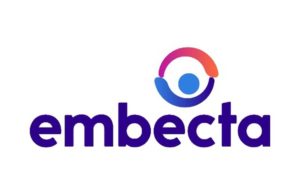 Embecta (Nasdaq:EMBC) today shared new data highlighting the potential of an insulin patch pump in managing type 2 diabetes.
Embecta (Nasdaq:EMBC) today shared new data highlighting the potential of an insulin patch pump in managing type 2 diabetes.
Parsippany, New Jersey-based Embecta presented two abstracts at the American Diabetes Association Scientific Sessions in Orlando, Florida. The data pointed to the potential for adults with type 2 diabetes to better manage insulin delivery through a patch pump with a larger, 300-unit insulin reservoir. Such technology could offer longer wear times and fewer disposable patches over time.
Embecta is developing a patch pump with a 300-unit reservoir for the type 2 population. This open-loop insulin patch pump technology remains under FDA review. The company’s closed-loop insulin delivery system for type 2 diabetes, which has FDA breakthrough device designation, continues to move forward, too.
Dr. Eugene E. Wright Jr. of South Piedmont Area Health Education Center and co-authors looked at the larger insulin reservoirs. They analyzed adults with type 2 diabetes on multiple daily injections (MDI). Investigators estimated the number for whom 200-unit and 300-unit insulin reservoirs would be sufficient for different wear times, as well as the number of patch pumps needed over time.
Wright and co-authors concluded that a 300-unit reservoirs would meet the needs of 64% of adults with type 2 diabetes for 72-hour wear. Meanwhile, a 200-unit reservoir would meet the needs of just 38% of the same population.
Based on the mean total daily dose (TDD), the number of patch pump suitable for 72-hour wear per month for 200-unit vs. 300-unit reservoirs are 15 vs. 10, respectively.
“With the option of a larger insulin reservoir size, people with type 2 diabetes who are currently using approximately the mean dose of daily insulin may consider transitioning from MDI to a patch pump without the cost and inconvenience of changing the disposable pump every day or two,” Wright said.
More data from Embecta at ADA
Additionally, Dr. Viral N. Shah of the Indiana University School of Medicine and co-authors looked at 41,215 adults with type 2 diabetes. Subjects were on MDI and prescribed a mean insulin TDD of 96 units. This study investigated demographic and clinical factors impacting insulin dosage.
Investigators concluded that insulin TDD was 3% greater for each unit increase in body mass index (BMI) and 8% and 12% higher among those prescribed an SGLT-2 inhibitor and GLP-1RA, respectively, at baseline. TDD was lower by 2%, 8% and 20% in adults prescribed one, two or three non-insulin medications before the index TDD date, respectively. TDD was 15% lower among African Americans vs. Caucasians and 7% lower in women than men.
“The data presented at the ADA Scientific Sessions this weekend reaffirms what we’ve learned from speaking with people living with diabetes and their healthcare providers: there is a critical unmet need among the T2D population for pumps with a larger insulin reservoir,” said Dr. Henry Anhalt, chief medical officer, Embecta. “As our mission is to make life better for people living with diabetes, we prioritized a 300u reservoir in the proprietary disposable insulin delivery system we submitted earlier this year to the U.S. Food and Drug Administration (FDA) in a 510(k) premarket filing.”

